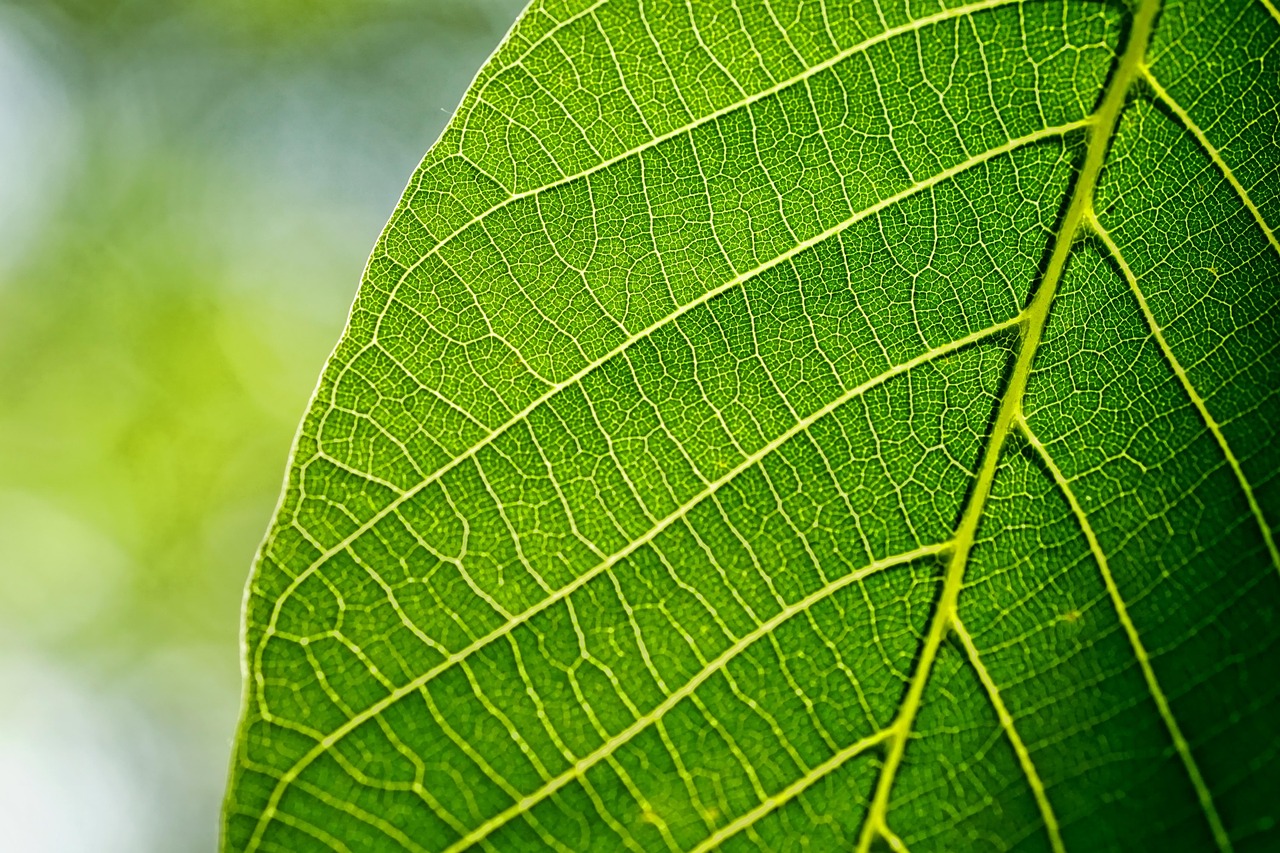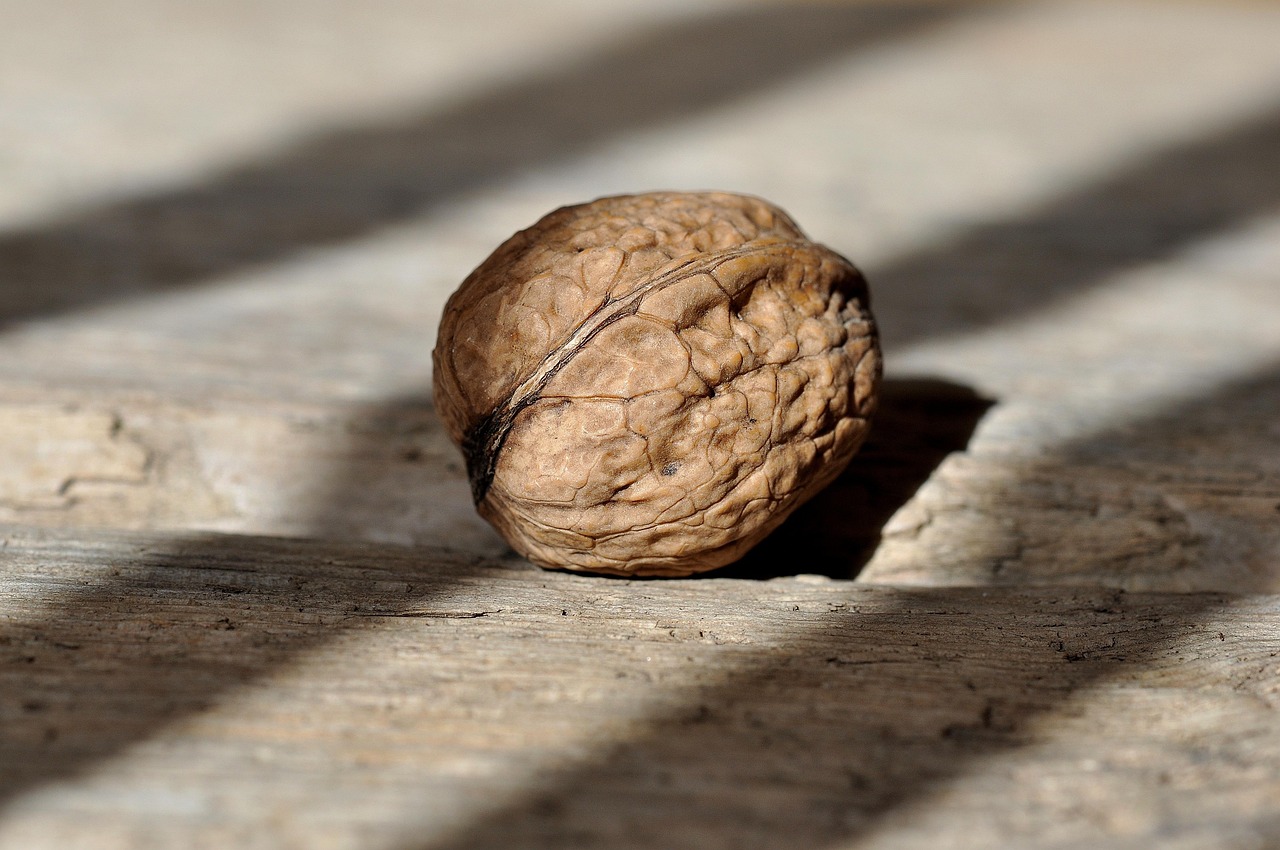Pruning walnut trees enhances harvesting by improving air circulation and light penetration while reducing the risk of disease. Proper techniques can lead to healthier trees and easier access to nuts, making the entire process more efficient.
Understanding Walnut Trees
Walnut trees, particularly the English walnut (Juglans regia) and black walnut (Juglans nigra), are popular for their valuable timber and delicious nuts. They thrive in well-drained soil and require ample sunlight. These trees can grow quite large, making effective maintenance essential for optimal nut production.

One of the critical aspects of maintaining walnut trees is pruning. This practice not only helps shape the tree but also plays a vital role in enhancing its productivity. Proper pruning techniques ensure that the tree remains healthy and can produce high-quality nuts.
The Importance of Pruning
Pruning offers several benefits to walnut trees, particularly when it comes to harvesting. Some of the key advantages include:
- Improved air circulation, reducing the risk of fungal diseases.
- Better light penetration, leading to healthier leaves and nuts.
- Enhanced accessibility for harvesting.
- Encouragement of new growth and higher yields in the following seasons.
When walnut trees are pruned correctly, they not only produce more nuts but also develop a stronger structure. This resilience allows them to withstand harsh weather conditions, which could otherwise damage weaker branches.

Best Time to Prune Walnut Trees
The timing of pruning is crucial. The best time to prune walnut trees is during late winter or early spring, just before new growth begins. At this time, the trees are still dormant, which minimizes stress and allows for quicker recovery. Pruning during this period also reduces the risk of sap bleeding from cuts, which can attract pests and diseases.
It is important to avoid pruning in late summer or fall, as this can stimulate new growth that may not harden off before winter. Such new growth is susceptible to damage from frost and cold temperatures.
Essential Pruning Techniques
To effectively prune walnut trees, several techniques should be employed. Understanding these methods will help ensure that you maximize the tree’s potential while minimizing damage.

1. Thinning
Thinning involves removing specific branches to improve air circulation and light exposure within the canopy. This technique encourages the growth of strong branches and helps prevent overcrowding.
2. Heading Cuts
Heading cuts involve cutting back a branch to a bud or lateral branch. This technique helps control the size of the tree and encourages bushier growth, which can lead to more fruit production.
3. Removal of Dead or Diseased Wood
Always remove any dead or diseased branches during pruning. This practice not only helps maintain the overall health of the tree but also prevents the spread of diseases among other parts of the tree.

4. Shaping
Shaping involves creating a strong central leader and ensuring that lower limbs do not obstruct harvesting. A well-shaped tree will be easier to manage and will provide better access for harvesting nuts.
Tools Needed for Pruning
Having the right tools is essential for effective pruning. Here is a list of tools that can make the job easier:
- Bypass Pruners: Ideal for smaller branches up to 1 inch in diameter.
- Loppers: Suitable for branches between 1 and 2 inches thick.
- Pruning Saw: Necessary for larger branches that cannot be cut with pruners or loppers.
- Safety Gear: Gloves, goggles, and protective clothing are important to keep you safe while pruning.
Common Mistakes to Avoid
When pruning walnut trees, it’s also essential to be aware of common mistakes that can hinder their growth:
- Pruning too much at once can stress the tree.
- Neglecting to clean tools between cuts can spread diseases.
- Ignoring the natural shape of the tree can lead to poor growth patterns.
By avoiding these mistakes and employing proper pruning techniques, you can ensure that your walnut trees remain healthy and productive.
Pruning Techniques for Walnut Trees
Understanding various pruning techniques is essential for maximizing the health and productivity of walnut trees. Each technique serves a specific purpose, and knowing when and how to apply them can significantly enhance the quality of nut production.
Canopy Management
Canopy management focuses on shaping the tree to allow adequate light penetration and air circulation. A well-managed canopy promotes better nut quality and yields. Key strategies include:
- Open Canopy Structure: Aim for a vase-like shape, which allows sunlight to reach the inner branches.
- Regular Maintenance: Consistent annual pruning keeps the tree’s shape and prevents overcrowding.
- Height Control: Limit the height of the tree to facilitate easier harvesting.
Pruning Young Walnut Trees
Pruning young walnut trees is crucial to establish a strong framework. This initial pruning sets the stage for future growth and nut production. Important steps include:
- Establishing a Central Leader: Choose the most vigorous shoot as the central leader and remove competing branches.
- Developing Scaffolding Branches: Select 3 to 5 strong lateral branches around the central leader to form the tree’s structure.
- Regularly Remove Suckers: Eliminate suckers that grow at the base of the tree to maintain energy in the main structure.
Seasonal Pruning Considerations
The season in which you prune walnut trees can greatly affect their recovery and productivity. Understanding seasonal variations helps in making informed decisions.
Winter Pruning
Winter pruning, performed during dormancy, is beneficial for several reasons:
- Reduced Stress: The tree is less stressed during this time, allowing it to heal faster.
- Pest Control: Fewer pests are active, reducing the risk of disease transmission through cuts.
- Easier Visibility: Without leaves, it is easier to see the structure of the tree and make informed cuts.
Spring Pruning
Spring pruning should be approached with caution. While it can be beneficial, there are some key points to consider:
- Timing Matters: Conduct spring pruning just as buds begin to swell but before full leaf-out.
- Avoid Excessive Cutting: Limit cuts to avoid stressing the tree as it starts its growing season.
Pruning Techniques for Mature Trees
Mature walnut trees require different approaches compared to younger trees. The focus shifts toward maintaining health and productivity. Here are techniques specifically designed for mature trees:
Rejuvenation Pruning
Rejuvenation pruning involves selectively removing older branches to promote new growth. This technique is beneficial for trees that have become less productive over time. Steps include:
- Selective Removal: Choose older, less productive branches for removal while preserving healthy ones.
- Encouragement of New Growth: By removing older branches, you stimulate new growth that can be more fruitful.
Structural Pruning
This technique focuses on reinforcing the structural integrity of mature walnut trees. It involves:
- Crown Reduction: Gradually reduce the height of the tree if it has become too tall.
- Weight Distribution Considerations: Remove branches that may cause imbalance or pose risks of breaking under heavy fruit loads.
Post-Pruning Care
After pruning, it’s critical to provide proper care to ensure the health of the tree. This includes:
Wound Treatment
Treating pruning wounds helps prevent disease and pest infestations. Options for treatment include:
- Painting Wounds: Use a tree wound sealant if recommended by local agricultural extension services.
- Avoiding Sealants: In some cases, leaving cuts open may allow the tree to heal naturally, so consult local experts.
Nutrient Management
To support recovery after pruning, ensure that walnut trees receive adequate nutrients. Essential considerations include:
- Soil Testing: Conduct regular soil tests to determine nutrient needs.
- Fertilization Schedule: Apply balanced fertilizers early in the growing season to promote robust growth.
Caring for your walnut trees after pruning is just as important as the pruning process itself. By following these guidelines, you can ensure that your trees remain healthy and productive for many seasons to come.
Pest and Disease Management in Walnut Trees
Maintaining healthy walnut trees goes beyond pruning and nutrient management. Effective pest and disease management is essential for ensuring that your trees thrive. Understanding the common pests and diseases that affect walnut trees helps in implementing preventive measures and treatments.
Common Pests
Several pests can damage walnut trees. Identifying these pests early can help minimize their impact. Some common pests include:
- Walnut Husk Fly: This pest lays eggs in the husks of walnuts, causing premature falling and damage to the nuts.
- Black Walnut Aphid: These small insects suck sap from the leaves, leading to yellowing and stunted growth.
- Walnut Tree Weevil: Larvae feed on the bark, which can weaken branches and lead to dieback.
- Scale Insects: These pests can cause leaf drop and overall tree stress by sucking sap.
Managing Pests
Effective pest management strategies include:
- Regular Monitoring: Inspect trees frequently for signs of pests. Early detection allows for timely intervention.
- Beneficial Insects: Encourage natural predators like ladybugs and lacewings that feed on harmful pests.
- Insecticidal Soaps: Use organic insecticidal soaps to control soft-bodied insects like aphids.
Disease Management
Walnut trees are also susceptible to various diseases that can affect their health and productivity. Here are some common diseases:
Common Diseases
- Walnut Blight: Caused by a bacterial infection, walnut blight leads to dark lesions on leaves and husks, severely affecting nut quality.
- Crown Gall: This bacterial disease causes abnormal growths, or galls, at the base of the tree, which can stunt growth.
- Powdery Mildew: This fungal disease presents as a white powdery coating on leaves, leading to reduced photosynthesis.
- Anthracnose: A fungal infection that causes leaf spots and can lead to defoliation if not managed properly.
Disease Prevention Strategies
To prevent diseases in walnut trees, consider the following strategies:
- Proper Pruning: Good pruning practices improve air circulation and reduce humidity around leaves, making it less conducive to disease spread.
- Cultural Practices: Maintain tree health through proper irrigation, fertilization, and mulching to reduce stress.
- Fungicide Application: In cases of severe disease pressure, appropriate fungicides may be applied according to local guidelines.
Harvesting Techniques for Walnut Trees
In addition to maintaining tree health through pruning and pest management, understanding harvesting techniques is vital for maximizing yields. The method of harvesting can influence the quality of the nuts produced.
Timing the Harvest
The timing of the harvest is crucial to ensure that the walnuts are collected at their peak quality. When determining the right time to harvest, consider the following signs:
- Husk Color Change: The husks will begin to turn from green to yellow or brown as they ripen.
- Nuts Falling: When nuts start falling from the tree, it often indicates they are ready for harvest.
- Squeezing Test: Squeeze the husk; if it splits easily, the nuts are typically ready for picking.
Harvesting Methods
There are several methods for harvesting walnuts, each with its advantages:
Manual Harvesting
This traditional method involves hand-picking nuts from the ground or shaking branches to facilitate falling. While labor-intensive, it allows for careful selection of high-quality nuts.
Mechanical Harvesting
For larger orchards, mechanical harvesters can save time and labor. These machines shake the tree or collect fallen nuts directly. However, care must be taken to minimize damage to the nuts during collection.
Post-Harvest Handling
After harvesting, proper handling is essential to maintain nut quality. Steps include:
- Cleaning: Remove debris and dirt from the harvested nuts using air blowers or screens.
- Drying: Ensure that nuts are adequately dried before storage to prevent mold growth.
- Storage Conditions: Store nuts in a cool, dry place with low humidity to prolong shelf life.
Environmental Considerations
Caring for walnut trees also means being mindful of environmental impacts. Sustainable practices can help protect both the trees and their surrounding ecosystem. Consider these practices:
Sustainable Pruning Practices
- Avoid Over-Pruning: Excessive pruning can reduce tree vigor and increase susceptibility to diseases.
- Use Organic Methods: Opt for organic pest control methods whenever possible to minimize chemical use in your orchard.
Biodiversity Promotion
Encouraging biodiversity within and around walnut orchards can lead to healthier ecosystems. Planting cover crops and native plants can attract beneficial insects and improve soil health.
This holistic approach not only provides a better environment for your walnut trees but also contributes positively to the overall ecosystem. By integrating these practices, you will enhance both tree health and nut production over time.
Advanced Techniques for Walnut Tree Management
To further optimize the health and productivity of walnut trees, advanced techniques can be employed in conjunction with basic pruning practices. These methods focus on improving overall tree management while addressing specific challenges faced by walnut growers.
Canopy Density Management
Managing canopy density is crucial for ensuring that sunlight reaches all parts of the tree. A dense canopy can create shaded areas that lead to poor nut development and increased disease pressure. Techniques to manage canopy density include:
- Selective Thinning: Remove selected branches to allow more light to penetrate the canopy.
- Vertical Training: Train branches to grow vertically rather than horizontally, which can help open up the canopy and improve airflow.
Soil Health Management
Healthy soil is foundational for strong walnut trees. Practices that enhance soil health include:
- Cover Cropping: Planting cover crops during the off-season can prevent soil erosion, improve nutrient cycling, and suppress weeds.
- Composting: Adding organic compost enriches the soil with essential nutrients and improves its structure.
Irrigation Practices
Proper irrigation is vital for walnut trees, especially in regions with limited rainfall. Efficient irrigation practices include:
- Drip Irrigation: This method delivers water directly to the root zone, minimizing water waste and ensuring that trees receive adequate moisture.
- Irrigation Scheduling: Monitor soil moisture levels and adjust irrigation schedules accordingly to prevent over or under-watering.
Collaborating with Local Experts
Forming partnerships with local agricultural extension services, agronomists, or walnut specialists can provide invaluable insights into the specific needs of your walnut orchard. These experts can offer tailored advice on:
- Local Pest and Disease Issues: Understanding regional challenges helps in developing effective management plans.
- Soil Testing Services: Regular testing can provide data on nutrient levels, pH balance, and soil health indicators.
- Workshops and Training Programs: Participating in educational programs can enhance your knowledge of best practices for walnut tree care.
Community Involvement and Education
Involving the community in walnut tree management can foster a sense of stewardship and awareness about sustainable practices. Educational workshops, farm tours, and outreach programs can help spread knowledge about:
- Sustainable Agriculture: Sharing techniques for sustainable walnut production can encourage environmentally friendly practices among neighbors.
- Health Benefits of Walnuts: Educating consumers about the nutritional value of walnuts can increase demand for locally grown products.
Conclusion
Pruning walnut trees for easier harvesting involves a multifaceted approach that includes proper timing, techniques, and post-care management. By understanding the importance of pruning, pest and disease management, effective harvesting strategies, and sustainable practices, walnut growers can significantly enhance their yield and tree health.
Implementing advanced techniques such as canopy density management, soil health improvement, and efficient irrigation ensures that walnut trees thrive in a healthy environment. Collaboration with local experts and community engagement further enriches the knowledge base necessary for successful walnut cultivation.
The journey of cultivating walnut trees is not only about producing nuts but also about creating a sustainable ecosystem that benefits both growers and the environment. By adopting these comprehensive strategies, you are well on your way to achieving a productive and resilient walnut orchard.
